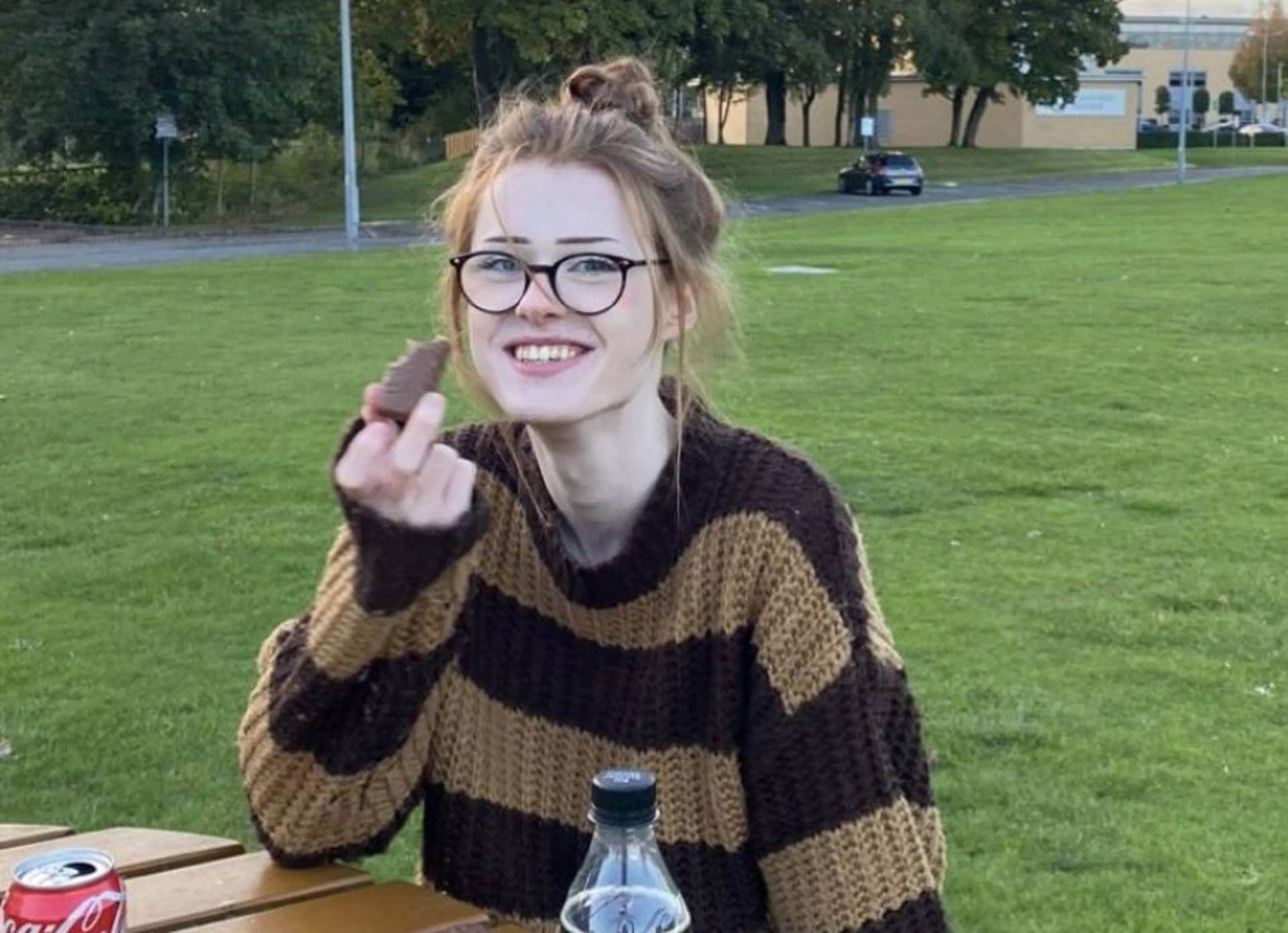Like a monster serially rebirthed, child murder appears after periods of decline. It unfailingly strikes terror and panic into entire societies. The murder of children by other children is a crime that transcends time, space, logic and other finitudes that criminologists are used to. There is a dreadful counterintuitive senselessness about children who kill other children: Motives are either absent or barely intelligible. The gain or reward the murderers take from the deed are just not available to the senses. At least, the senses of most sentient beings.
On February 11, 2023, two teenagers murdered 16-year-old Brianna Ghey by stabbing in Culcheth, England. The killers have been called wicked, devilish and, most regularly, evil. None of these descriptions are in the least bit convincing. People just keep gasping, “Why did they do it?” The nowadays fashionable and utterly simplistic “hate crime” is easy on the intellect but of no use to understanding.
Two youths’ macabre experiment
Brianna was born a male in Birchwood, in the north of England. She had not undergone any gender reassignment surgery but identified, dressed and referred to herself as a woman at the time of her murder.
Her killers were both 15 at the time of the murder. Labeling their motive as transphobia is convenient, but misleading. One of the killers, a male known in court as Y, had a grim curiosity that led him to use dehumanizing language suggesting a dislike or prejudice against transgender people. “It’s a boy,” Y wrote in response to a message from his female accomplice, X, in which she referred to Brianna as “she.”
“Really all I want to see is what size dick it had,” wrote Y, revealing a grisly fascination. Britain’s Cheshire police announced that they had “no information or intelligence to suggest it was a hate crime,” though the view was not shared by many, especially not by members of the LGBTQ+ community who have been holding vigils.
In a perverse way, the manner in which the young killers planned the murder betrayed maturity. Their text messages seemed to indicate that there were four other potential victims as subjects in what might have been a macabre experiment. X messaged, “Let’s just stab her. It’s more fun.” The male Y answered, “I want to see if it will scream like a man or a girl.” (Note the persistent use of “it”.)
The two killers went to the trouble of befriending Brianna, feigning a sort of state of mutual trust. They plotted to meet her in a lonely country park in Culcheth. Then they stabbed her 28 times in the head, neck and body. They put a certain level of thought into their method before doing the deed. But the question remains: Why did they do it?
The Bell and Bulger cases
At a certain age, children are intrigued by things beyond their comprehension. It sickens us, but there are children who want to experience the sensation of killing. Most dismember daddy longlegs or trample on small animals for no better reason than that they can. But others have more exacting curiosities.
The UK’s paradigm case was in 1968 when the 11-year-old Mary Bell strangled two boys, aged three and four, “solely for the pleasure and excitement of killing,” according to the judge. Like X, she had an accomplice. Mary’s accomplice was eventually acquitted, leaving her as the only culprit. (She was named, as will be X and Y in due course.) Mary was sent to a special security unit and released on license in 1980, when she was given a new identity. It is believed she now has a daughter. There is no way of knowing how accurate the judge’s assessment was, but maybe she really was seeking a depraved thrill.
The case was echoed in 1993 when two 11-year-old boys killed James Bulger, aged two — read that again: two. The killers dropped the child on his head and repeatedly punched and kicked him, at one point forcing batteries into his mouth, before hitting him on the head with a 22-pound iron bar. There were so many injuries that the coroner could not determine the precise cause of death. The killers were named as Jon Venables and Robert Thompson, and they were sentenced to a juvenile offenders’ facility. They were released in 2001, given new identities and granted legal anonymity for life.
Violence and the mentality of children
Morality is not innate: We learn to distinguish between right and wrong, probably from the age of four or, possibly, even earlier when we begin to internalize values and accept them as part of a natural order. From about six, children develop a more nuanced sense of morality and, later, learn to apply moral reasoning — that is, to discern rightness or wrongness in specific social settings. Empathy arrives any time after about eight. In all three cases discussed here, the ability to understand and share the feelings of another appears to be lacking. Or is it? It is difficult to believe any of the killers were not aware that they would be causing physical distress and, in the Bulger case, acute pain, to their victims.
We shouldn’t be surprised to learn how easily they subordinated this awareness to their own specific, excessively selfish interests. Adults do it all the time. Otherwise, there would be no crime. I am not arguing that child murder mirrors what goes on in society generally. But crimes of violence or crimes that involve violence concomitantly probably require subjectively depriving a person or group of people of some human qualities.
We are taken aback by the ferocity of children who kill, but adults do similarly. Children, like adults, victimize their peers. Fully half of child sex abuse incidents in England and Wales, for another example, are perpetrated by children. This is the recurringly reborn “monster” I mentioned earlier: it’s a cruel and daunting creature and we don’t know where it comes from or how it can be defeated.
Young killers pick on children as victims, not because they hate other children, but because they are convenient victims. Jon Venables and Robert Thompson were 11; they would hardly be in a position to kill an adult or anyone else who could fight back. Children can, however, and sometimes do kill adults too. In 2000, three teenage girls stabbed Sister Maria Laura Mainetti to death in Chiavenna, Italy. Like other victimizers, they attack whom they can.
Brianna Ghey was killed because her killers believed she would not provide resistance. Dehumanizing her was part of the method, not the motive. So, what is the motive? The same as it was for Bell and the others, perhaps.
Children live in a world in which arguments are settled usually by some form of violence either in or outside the school playground. Some even witness arguments settled at home by the same means. They also learn that larger arguments are also settled or not settled by violence.
This is not the place to go into the socio-psychological dynamics of violence or how global conflict affects the mentality of children. But we should at least recognize that the violence that horrifies us so much when perpetrated by children and adolescents is not so different from the behavior to which we are habituated. After all, no state can exist with a police force or its equivalent in armed might. Ultimate violence may not be used frequently, and official violence is deliberately under-emphasized, but it is the ultimate foundation of any social order.
Mercifully, child-on-child killings are rare. So rare that they appear extraordinary. Children are inspired to use violence by all manner of inescapable influences. They, like adults (and I mean all of us) experience the temptation to hurt others and maybe even kill them. But they and we exercise effective control over these impulses. Our sense of morality usually kicks in and, when it doesn’t, the threat of long-term imprisonment is always lurking.
But it is not so for some children. Their sense of right and wrong is either underdeveloped, buried beneath other sensibilities or possibly distorted by what they’ve witnessed at home or in their social environments. They do not have inhibitions that stop others. Or they have curiosity sufficient to overpower them.
[Ellis Cashmore’s most recent book is The Destruction and Creation of Michael Jackson]
The views expressed in this article are the author’s own and do not necessarily reflect Fair Observer’s editorial policy.
Support Fair Observer
We rely on your support for our independence, diversity and quality.
For more than 10 years, Fair Observer has been free, fair and independent. No billionaire owns us, no advertisers control us. We are a reader-supported nonprofit. Unlike many other publications, we keep our content free for readers regardless of where they live or whether they can afford to pay. We have no paywalls and no ads.
In the post-truth era of fake news, echo chambers and filter bubbles, we publish a plurality of perspectives from around the world. Anyone can publish with us, but everyone goes through a rigorous editorial process. So, you get fact-checked, well-reasoned content instead of noise.
We publish 2,500+ voices from 90+ countries. We also conduct education and training programs
on subjects ranging from digital media and journalism to writing and critical thinking. This
doesn’t come cheap. Servers, editors, trainers and web developers cost
money.
Please consider supporting us on a regular basis as a recurring donor or a
sustaining member.
Will you support FO’s journalism?
We rely on your support for our independence, diversity and quality.







Comment